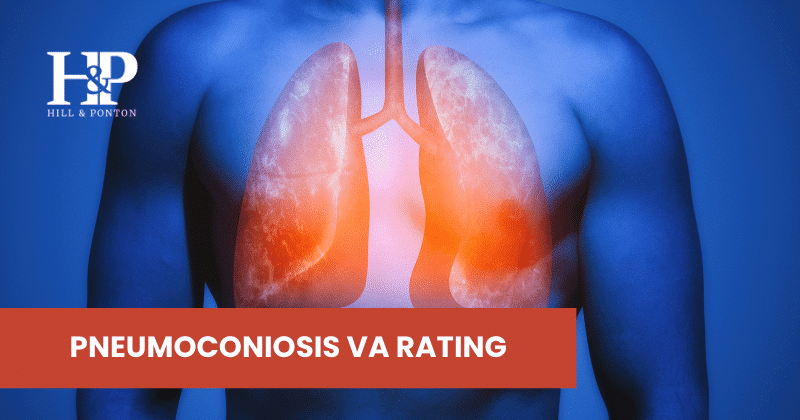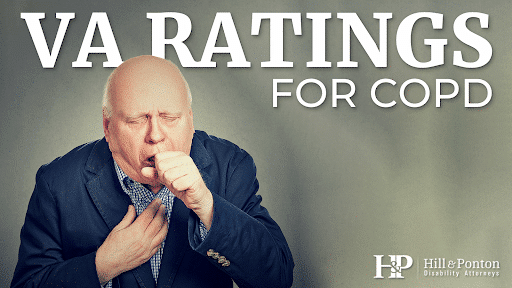When soldiers are exposed to sands and dust thrown up by helicopters, caravans and storms during their service, they sometimes will become affected by interstitial lung diseases, such as Pneumoconiosis or what has also been referred to as “desert lung disease.”
Pneumoconiosis is an interstitial lung disease that occurs when different types of toxic dusts are inhaled over long periods of time.
It is generally understood as a workplace/occupational disease, because many of the potential hazards that cause it are work-related.
Over time, the dust gathers in the lungs and eventually it becomes difficult to get air.
Interstitial lung diseases are conditions that cause scarring of the lung tissue.
For veterans, this may have occurred because of exposure to hazardous materials like asbestos, burn pit toxins or Agent Orange.
Pneumoconiosis specifically presents in those who inhaled Persian Gulf sand or dust that they were exposed to from vehicles and weather related events.
There is a wide-range of severities for pneumoconiosis, but it is ultimately irreversible.
The treatment available is utilized to help slow down the progression of the disease and improve day-to-day function.
Since there is a clear connection between Pneumoconiosis and that it is an occupational hazard for veterans, it is a recognized diagnosis by the VA and can qualify you for benefits.
Were you denied benefits for Pneumoconiosis and need help filing an appeal? Contact our team today and let us help.
Eligibility Criteria for Pneumoconiosis VA Rating
Symptoms of Pneumoconiosis
Many individuals who suffer from this disease may struggle with:
- A long-term cough
- Coughing up large amounts of mucus
- Feeling short of breath
They may also struggle with additional symptoms depending on the type of pneumoconiosis they were diagnosed with.
If they breathed a lot of asbestos, for example, fluid may build up in the pleural space.
Diagnosis of Pneumoconiosis
Using x-rays and CT scans, a doctor will try to determine if you have pneumoconiosis or other interstitial lung diseases.
If you have it, the images provided from these tests will show scar tissues on your lungs or dense lump tissue called nodules.
Additionally, they may order other tests like a pulmonary function test to see how well air enters and leaves the lungs.
An oxygen saturation test shows how much oxygen you breathe makes it to your bloodstream. Since this disease greatly impacts your ability to breathe, these tests will be a good indicator.
Pulmonary Function Test
A pulmonary function test (PFT), is a lung test that will show how well your lungs are functioning.
They are noninvasive, which means doctors don’t cut into or put any tools inside of your body.
Spirometry
This is one of the most common pulmonary function tests. It measures how much air you can breathe in and out, and how fast you can empty the air out of your lungs.
During the test, you’ll breathe in as much air as you can, and then quickly blow out as much air as you can through a tube connected to a machine called a spirometer.
This measures two things:
- The most air you can breathe out after inhaling deeply, which will indicate if you’re less able to breathe normally.
- How much air you can exhale in one second. This score tells your doctor how severe your breathing problems are.
Body plethysmography
You’ll breathe deeply for this test, which measures how much air is in your lungs when you inhale. It also checks to see how much air stays in your lungs after you breathe out.
This test is used for several reasons:
- To see how much a disease impacts your lungs and if a treatment may need to change.
- It can confirm whether you have a lung disease that reduces the amount of space in your lungs.
- It can show if your airways have narrowed.
- It can determine how well you’d do if you needed surgery.
Treatment for Pneumoconiosis
Pneumoconiosis cannot be cured. Once the disease has been diagnosed, treatment is aimed at keeping it from getting worse and controlling your symptoms. A treatment plan may include:
- Not smoking
- Avoiding all dust exposure
- Using oxygen
- Taking medications called bronchodilators to open lung passages
This chronic, long-term lung disease can also be managed by self-care and working closely with your medical team. Some tips for helping your day-to-day function include:
- Get a flu shot every year to protect your lungs
- Stop smoking and avoid secondhand smoke
- Ask your doctor if pulmonary rehabilitation could help
- Get regular exercise and plenty of sleep
- Eat a well-balanced diet
- Struggling to breathe can cause stress and anxiety, so be sure to talk to a mental health professional if you feel it is necessary
Respiratory Disability Rating Scale
The respiratory disability rating scale is utilized for all lung-related diseases.
The VA will have you undergro a spirometry test.
Depending on how you score, you’ll be given a rating based on your Forced Vital Capacity and Forced Expiratory Volume, or FEV-1/FVC score, which will determine your VA disability rating.
This score identifies how restricted your lung capacity is and how severe your condition is.
If you are above 70% on the FEV-1/FVC scale, you will receive a 10% VA rating.
Anything below 40% will give you a 100% rating because you have very low lung capacity and would likely need oxygen to breathe.
VA Rating Criteria for Pneumoconiosis
Diagnostic Code and Rating Schedule
Pneumoconiosis is under 38 CFR § 4.97 – Respiratory System in the schedule of ratings and has the diagnostic code 6832.
Filing a Claim for Pneumoconiosis
If you worked in unsafe conditions while serving in the military and now have developed breathing problems, you might be eligible for pneumoconiosis VA disability benefits.
Just like any other disability, you need to provide proof of diagnosis and a connection to your military service to receive these benefits.
First, you should visit a doctor approved by the VA who can confirm your diagnosis.
It’s important to gather documents that show your exposure to harmful dust during your military service.
If you served in the Gulf War or after 9/11 and were exposed to toxins from burn pits, you may be eligible for a presumed connection for any interstitial lung disease.
In such cases, you won’t need to provide a medical explanation proving that your illness was caused by your service.
After organizing your documents, you will undergo a VA disability pulmonary function test. This test measures things like spirometry, lung volumes, and diffusion capacity to assess the function of your lungs.
The results of these tests will help the doctors determine the severity of your illness and assign you a respiratory disability rating.
This rating will determine the amount of monthly benefits you will receive.
Have Questions About Pneumoconiosis Benefits?
The attorneys at Hill & Ponton are here to support you in your claim and determining your Pneumoconiosis disability percentage. If you are intending to appeal a denied claim, you can contact us for an evaluation.




